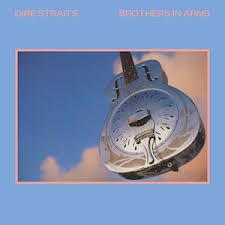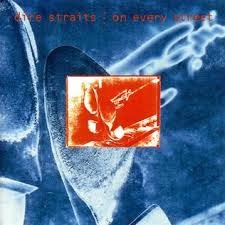Dire Straits music; An Album Review

Dire Straits music; An Album Review
Dire Straits became one of the most iconic rock bands of their era, known for their unique sound and timeless hits. From their breakout debut in 1978 to their global success with "Brothers in Arms," here’s a look at their most successful albums that defined their remarkable career.
Most Asked Questions
What is so great about Dire Straits?
Dire Straits music stands out for its clarity, precision, and emotional depth. Mark Knopfler’s fingerstyle guitar technique gives their sound a unique, expressive quality. His lyrics tell detailed, story-driven tales of everyday life, romance, and reflection. While punk and disco dominated the late 1970s, Dire Straits built a following through craftsmanship and authenticity. Their songs rarely relied on trends. Instead, they focused on clean instrumentation and thoughtful songwriting. This gave their music a timeless quality that still resonates.
Why did Dire Straits break up?
Dire Straits ended due to a mix of pressures. After years of success, Mark Knopfler felt drained by fame and large-scale touring. He wanted to explore solo projects in a less commercial environment. Creative control had always rested heavily with him, which created internal strain. By 1995, the band formally disbanded. However, Dire Straits music remained relevant as Knopfler’s solo work continued to reflect its influence.
Who were the original members of Dire Straits?
The founding lineup included Mark Knopfler (lead guitar and vocals), David Knopfler (rhythm guitar), John Illsley (bass), and Pick Withers (drums). This original group laid the foundation for Dire Straits music. Their chemistry shaped the early sound, especially on the first two albums.
What is Dire Straits' most famous song or album?
Most fans know “Sultans of Swing,” the hit that launched them. “Money for Nothing” became a global anthem in the 1980s. “Brothers in Arms,” released in 1985, stands as their most commercially successful album. These moments define the peak of Dire Straits music and secured their place in rock history.
Did Mark Knopfler write all of Dire Straits' songs?
Mark Knopfler wrote the vast majority of Dire Straits music. His lyrical and melodic control shaped the band’s identity. There were rare collaborations, such as Sting contributing to the chorus of “Money for Nothing.” However, Knopfler remained the band’s creative center.
Is Dire Straits in the Rock and Roll Hall of Fame?
Yes, Dire Straits were inducted in 2018. The induction recognized their influence on guitar-driven rock, their worldwide success, and the continued relevance of Dire Straits music. Although the band didn’t perform at the ceremony, their legacy remains strong.
What is Mark Knopfler doing now?
After Dire Straits, Knopfler launched a respected solo career. He has released several solo albums and collaborated with artists across genres. His solo work carries the hallmarks of Dire Straits music — narrative lyrics, melodic finesse, and clean guitar work. Knopfler also scores films and occasionally tours.
Why is "Sultans of Swing" so hard to play on guitar?
“Sultans of Swing” challenges guitarists due to Knopfler’s fingerpicking style, rapid licks, and fluid transitions. He plays without a pick, blending rhythm and lead seamlessly. This technique is central to Dire Straits music. It’s hard to replicate because it relies on touch and tone more than speed or distortion.
What was the inspiration behind "Money for Nothing"?
“Money for Nothing” was inspired by a conversation Knopfler overheard in an appliance store. Workers complained about rock stars making easy money. The lyrics echo their words directly, adding irony. The song’s riff and lyrics made it one of Dire Straits music’s defining tracks — gritty, catchy, and culturally sharp.
How many albums did Dire Straits release?
Dire Straits released six studio albums between 1978 and 1991. Each album shows a different phase in their evolution. From their raw debut to the polished sound of “Brothers in Arms” and the final chapter “On Every Street,” Dire Straits music developed while keeping its core identity intact.
The Albums
1. Brothers in Arms (1985)

Brothers in Arms became the most commercially successful album in Dire Straits music history. Released in 1985, it reached audiences worldwide and sold over 30 million copies. This album wasn’t just a hit—it became a cultural milestone. Its blend of polished production, strong songwriting, and digital innovation changed how people listened to rock music.
The album arrived during a technological shift in the music industry. It was one of the first to be recorded fully digitally and marketed heavily on compact disc. That gave it a sonic clarity listeners hadn't heard before. Dire Straits music embraced this modern approach, blending synthesizers with Knopfler’s clean guitar tones. The sound was smooth but never dull.
“Money for Nothing” gained massive exposure through MTV, thanks to its animated video. The track also featured Sting, whose line “I want my MTV” became iconic. Meanwhile, “Walk of Life” offered a lighter, upbeat contrast, becoming another global hit. However, deeper cuts like “Your Latest Trick” and the title track revealed the band’s range and maturity.
Thematically, the album explored war, commercialism, and emotional distance. “Brothers in Arms” addressed the Falklands War with poignant lyrics and a haunting arrangement. This emotional depth added serious weight to the record. Every track contributed to a unified experience rather than just chasing chart positions.
Critics initially gave mixed reviews, but the public response was overwhelming. The album topped charts in multiple countries and earned Grammy Awards. Over time, its reputation grew stronger. Brothers in Arms became a landmark not just for Dire Straits music, but for 1980s rock in general.
Today, it remains a defining moment in the band’s legacy. Its commercial success and artistic quality ensure its place among the greatest albums of the decade.
2. Dire Straits (1978)

The debut album Dire Straits, released in 1978, introduced the world to a new kind of rock sound. At a time when punk and disco were dominant, Dire Straits music offered something cleaner and more subtle. Mark Knopfler’s fingerstyle guitar instantly set the tone. From the opening bars of “Down to the Waterline,” listeners heard a band with clarity and purpose.
Knopfler’s lyrics focused on real lives and ordinary people, drawing influence from Bob Dylan and J.J. Cale. “Sultans of Swing” became the breakout hit. Its intricate guitar work, smooth solos, and vivid storytelling helped define the band's early identity. Critics praised the album for its restraint, especially when compared to the louder trends of the era. However, the real strength of Dire Straits music on this album was its consistency. Each track contributed to a tight, cohesive whole.
Commercially, the album gained slow momentum but eventually became a global success. The band’s blend of roots rock, blues, and pub rock struck a chord with a broad audience. In retrospect, this debut feels timeless. There are no gimmicks, no dated production choices. The clarity of the arrangements makes the music feel just as fresh today.
The album was recorded quickly and on a modest budget, but it showcased a group with confidence and focus. While Knopfler led creatively, the interplay between the band members brought balance and strength. This release marked the beginning of Dire Straits music as a quiet revolution — not flashy, but powerful. It paved the way for everything that followed and introduced a sound that would grow richer with each album. As starting points go, few bands have launched with such a fully formed identity.
3. Making Movies (1980)

Making Movies marked a clear shift in Dire Straits music. Released in 1980, the album introduced a more ambitious and cinematic sound. Mark Knopfler expanded his songwriting style, focusing more on emotion and storytelling. From the opening moments of “Tunnel of Love,” the album feels bigger and more theatrical than its predecessors.
The departure of David Knopfler during recording signalled internal tension. Despite that, the band delivered one of its strongest albums. Roy Bittan of the E Street Band contributed piano, adding richness to the arrangements. Songs like “Romeo and Juliet” showcased a softer, romantic edge, while “Solid Rock” kept their bluesy roots intact. The result was a more diverse album with new textures.
Critically, the album received strong praise for its emotional depth and musical evolution. Fans embraced it quickly, and it became a commercial success. Dire Straits music now blended their signature restraint with broader, more expressive elements. The lyrics became more poetic, and the instrumentation more layered. Knopfler’s fingerstyle technique continued to define the band’s sound, but the scope widened considerably.
“Skateaway” stood out with its vivid urban imagery and rhythmic groove. Although shorter than later albums, Making Movies never felt incomplete. Every track served a purpose. The album signalled that Dire Straits music was capable of growth and complexity without losing its identity.
In retrospect, Making Movies holds a special place in the band’s catalogue. It bridges the rawness of early albums with the refinement of later ones. It proved the band could evolve artistically while retaining their unique voice. Many fans and critics still consider it among their best efforts. The balance of storytelling, melody, and instrumental control marked a high point in the band's creative journey.
4. Love Over Gold (1982)

Released in 1982, Love Over Gold marked a bold step forward in Dire Straits music. The album featured only five tracks, yet each one explored deeper themes and extended compositions. It was a departure from radio-friendly formats, favouring musical ambition over instant accessibility. The result was a moody, atmospheric collection that challenged listeners while earning critical respect.
Mark Knopfler’s songwriting reached new levels of sophistication. “Telegraph Road,” a 14-minute epic, traced the rise and decline of American industry with precision and emotion. Meanwhile, “Private Investigations” blended spoken word with haunting melodies, offering a noir-like mood rarely heard in rock. These songs didn’t chase commercial trends. Instead, they demonstrated the confidence Dire Straits music had developed by their fourth album.
Despite its unconventional structure, the album found commercial success. It topped charts in the UK and several other countries. The production, handled by Knopfler, was crisp yet spacious. The instrumentation allowed room for tension and drama to unfold naturally. Synthesizers, piano, and subtle dynamics gave the record a cinematic quality.
Critics noted how Love Over Gold pushed the band’s artistic boundaries. Rather than repeating the radio-ready hits of earlier albums, it carved a path of its own. The themes were darker, the pacing slower, but the craftsmanship stood out. This was music that demanded patience — and rewarded it.
Dire Straits music here felt mature, introspective, and willing to take risks. The album didn’t deliver major singles on the level of “Sultans of Swing” or “Romeo and Juliet,” but it solidified the band’s creative depth. Many fans regard Love Over Gold as a hidden gem in their discography. Its elegance and ambition helped define what Dire Straits could achieve beyond standard rock conventions.
5. Communiqué (1979)

Released just a year after their debut, Communiqué continued the direction established by Dire Straits’ first album. However, while some critics saw it as too similar, others noted its subtle evolution. The band leaned further into their laid-back blues-rock style. Dire Straits music on this album emphasized atmosphere and flow over big moments.
“Lady Writer” stood out as the lead single. It carried echoes of “Sultans of Swing” but with a sharper edge. The rest of the album followed a more relaxed pace, giving space for the musicianship to shine. Mark Knopfler’s guitar work remained the centrepiece. His clean, fingerpicked style again brought warmth and clarity to every track. Throughout the album, Dire Straits music avoided clutter. The production, handled by Barry Beckett and Jerry Wexler, kept things simple and natural.
Though the record did not feature a huge hit like its predecessor, it sold well worldwide. Fans who appreciated the first album found much to enjoy here. Tracks like “Once Upon a Time in the West” and “Where Do You Think You’re Going?” expanded the band’s lyrical themes. There was a growing sense of introspection and social observation. The album didn't try to reinvent the wheel. Instead, it reinforced what made the band unique in the late '70s.
Communiqué didn’t receive the same level of acclaim as their debut, but it has aged well. It captures a confident band settling into its sound. The clean guitar lines, restrained production, and thoughtful lyrics define Dire Straits music during this phase. While not a bold leap forward, this album demonstrated the band’s consistency and skill. It showed that their quiet approach had staying power — even in a fast-changing musical landscape.
6. On Every Street (1991)

Released in 1991, On Every Street became the final studio album in Dire Straits music history. After a six-year gap following Brothers in Arms, expectations ran high. The album offered a mix of familiar elements and new directions, though critical reactions were mixed. Still, it sold well and topped charts in the UK and across Europe.
Musically, the album revisited the band’s signature guitar work and storytelling. Mark Knopfler maintained his fingerstyle approach, while the instrumentation blended rock, blues, and country influences. “Calling Elvis” delivered a quirky, radio-friendly lead single. “Heavy Fuel” followed with a harder edge, reminiscent of earlier tracks like “Money for Nothing.” Yet, several songs leaned toward slower tempos and a more reflective tone.
Themes on On Every Street often explored disillusionment, modern life, and personal struggle. Tracks such as “Iron Hand” and “Fade to Black” revealed a more serious, contemplative side. While not as cohesive as earlier records, the album still offered strong moments. It showed that Dire Straits music retained its emotional depth, even as the musical landscape shifted in the early 1990s.
Critics gave lukewarm responses, noting the album lacked the spark of earlier works. However, fans appreciated its subtlety and craftsmanship. Though it didn’t produce global hits on the scale of Brothers in Arms, it proved the band hadn’t lost its artistic identity.
Following the tour, Knopfler dissolved the band. He cited the pressures of fame and a desire to pursue solo projects. That made On Every Street the band’s swan song—quiet, understated, and deeply personal.
While not the most celebrated entry in Dire Straits music, this final album completed their journey on their own terms. Its quieter tone provided a fitting conclusion to one of rock’s most respected careers.
Dire Straits music stands apart in rock history for its restraint, clarity, and emotional power. Across six studio albums, the band evolved without losing its core identity. Mark Knopfler’s expressive guitar work and sharp storytelling gave each record a distinctive voice. Whether through the clean, stripped-down sound of their debut or the digital sophistication of Brothers in Arms, Dire Straits maintained artistic consistency.
Their influence stretched beyond charts and awards. Dire Straits music reshaped rock in a time dominated by excess and volume. They proved that subtlety and precision could still connect with millions. Even as trends shifted, the band never compromised its sound to fit in. That integrity remains one of the reasons their work still resonates today.
From the evocative landscapes of Love Over Gold to the radio hits of Making Movies, their catalog reflects depth and versatility. Every album carried something unique. Their final effort, On Every Street, closed the chapter with honesty rather than spectacle.
Ultimately, Dire Straits music earned its legacy through quiet confidence and timeless songwriting. Fans continue to discover their albums decades later, drawn in by the blend of musical sophistication and emotional truth. The band may be gone, but their records still speak—clearly, and with purpose.
Recent Posts
Queen studio albums: A Review
Phil Collins Albums Ranked & Reviewed – Complete Guide to Every Studio Album
The best of Massive Attack
Let’s Make Magic
Book Your Event DJ Now




